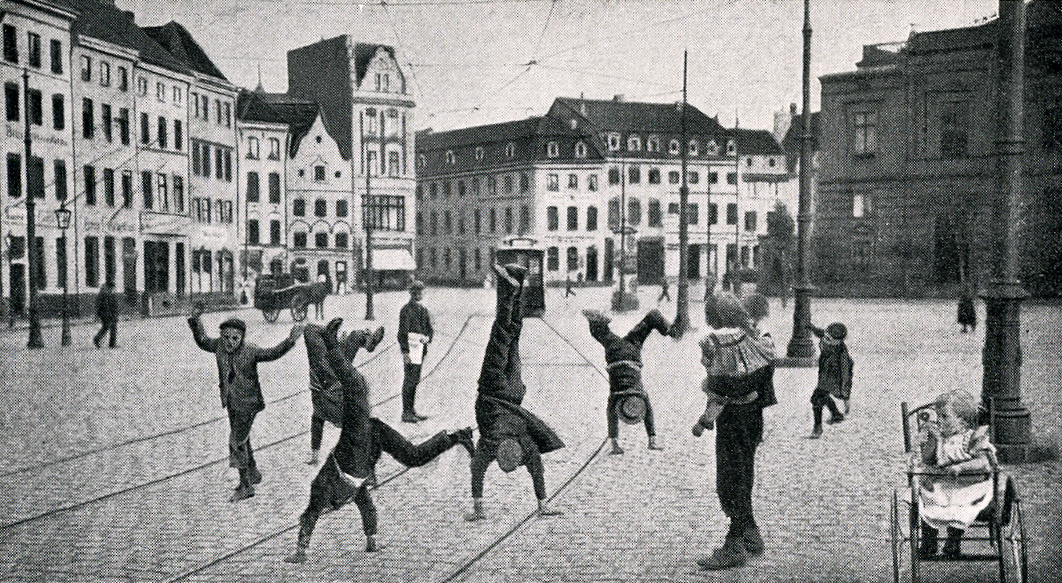Düsseldorf's Cartwheeler on:
[Wikipedia]
[Google]
[Amazon]

 The Düsseldorf's cartwheeler (''Radschläger'' in German) is the oldest tradition of
The Düsseldorf's cartwheeler (''Radschläger'' in German) is the oldest tradition of

 The Düsseldorf's cartwheeler (''Radschläger'' in German) is the oldest tradition of
The Düsseldorf's cartwheeler (''Radschläger'' in German) is the oldest tradition of Düsseldorf
Düsseldorf is the capital city of North Rhine-Westphalia, the most populous state of Germany. It is the second-largest city in the state after Cologne and the List of cities in Germany with more than 100,000 inhabitants, seventh-largest city ...
and became one of their famous landmarks
A landmark is a recognizable natural or artificial feature used for navigation, a feature that stands out from its near environment and is often visible from long distances.
In modern-day use, the term can also be applied to smaller structures ...
. This tradition was honoured in 1954 by the erection of a fountain, called Cartwheeler's Fountain, in Düsseldorf's ''Burgplatz''.
Origin of the legend and history
The origin of the custom cannot be pinned down to a single historic event, but several stories have appeared around it. The best known version is thebattle of Worringen
The Battle of Worringen was fought on 5 June 1288 near the town of Worringen (also spelled Woeringen), which is now part of Chorweiler, the northernmost borough (Stadtbezirk) of Cologne. It was the decisive battle of the War of the Limburg Succe ...
. Adolf VIII, Count of Berg, defeated the Archbishop of Cologne
The Archbishop of Cologne governs the Roman Catholic Archdiocese of Cologne in western North Rhine-Westphalia. Historically, the archbishop was ''ex officio'' one of the prince-electors of the Holy Roman Empire and ruled the Electorate of Cologne ...
in this battle in 1288. As a result of the victory, Düsseldorf received city rights. According to the story, the custom stems from the population and especially the children running for joy and making cartwheels on the streets .
Another narrative style is about a wedding procession, in which the wedding carriage's wheel broke. To ward off the impending disaster, a boy jumped into a coach, and held the wheel. Whether the wedding was that of Jan Wellem and Anna Maria Luisa de' Medici
Anna Maria Luisa de' Medici (11 August 1667 – 18 February 1743) was an Italian noblewoman who was the last lineal descendant of the main branch of the House of Medici. A patron of the arts, she bequeathed the Medicis' large art collection, in ...
or to the wedding of the Margravine Jakobea of Baden with Johann Wilhelm of Jülich-Cleves-Berg, is controversial. A further modification takes on these second wedding. The bride is supposed to have been very unhappy with her marriage, but the cartwheelers and their coach's skills would have made her laugh.
Late 19th century and early 20th century, many travelers came to the city for major exhibitions -the forerunners of today's fairs. The children discovered that cartwheels was a lucrative source of income, as the incoming bourgeois paid them up to a penny for what they thought was a "local and patriotic" symbol.
In 1945, after the war-evacuated Jan-Wellem monument was brought back to the city, not only torches and fanfare accompanied it, but also cartwheeling boys.
Cartwheels in Düsseldorf's cityscape
Cartwheelers are found in severalfountains
A fountain, from the Latin "fons" ( genitive "fontis"), meaning source or spring, is a decorative reservoir used for discharging water. It is also a structure that jets water into the air for a decorative or dramatic effect.
Fountains were o ...
in the city. The best known is Radschlägerbrunnen (Cartwheeler Fountain) in the Burgplatz, created in 1954 by Alfred Zschorsch, with Hans Müller-Schlösser's inscription "''Radschläger wolle mer blieve, wie jeck et de Minschen och drieve''" ("We want to keep being cartwheelers, no matter how crazy the world might be").
Friedrich Becker's Design from the late 1950s is the best known. His "Radschläger cube" from 1995 is now on Klosterstrasse in Düsseldorf. In 2022, a sculpture based on his design was erected at the Düsseldorf University of Applied Sciences (HSD).
The tradition is notably kept alive by the Alde Düsseldorf civil society of 1920, who conducted the first cartwheeler competition on 17 October 1937. Since 1971, it was held annually by boys and girls in June on the Königsallee, and since 2006 on the Rheinwerft below the old town and has become an integral part in the Düsseldorf event program. More than 500 boys and girls participate each year.
In 2001, the project ''Radschläger-Kunst'' (Cartwheeler-Art) started, consisting in the creation of over 100 cartwheeler sculptures by professional and amateur artists. The sculptures, which used Saint Lambertus Church door knockers as a starting model, are two meters high and wide and have a depth of 30 centimeters. They were distributed in the urban area and only a part was purchased at the end of the year from private individuals or companies.
References
{{DEFAULTSORT:Dusseldorf's cartwheeler German folklore German legends June observances Düsseldorf